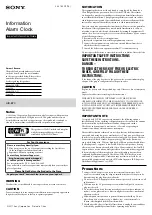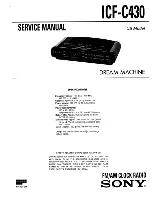
4 Conventional Products—2412, 2412TH, 2424, and 2424TH Direct Wire Photoelectronic Smoke Detectors
Each detector includes a Light Emitting Diode (LED) that provides a local
visual indication of the detector’s status. The LED blinks every ten
seconds as an indication that power is applied to the detector and lights
continuously in alarm. The detector has the provision for the connection
of an optional model RA400Z remote annunciator. The RA400Z provides
a visual indication of an alarm in the connected detector, and mounts to a
single gang box.
These detectors also have the latching alarm feature. The alarm can be
reset only by a momentary power interruption.
Each detector contains one set of Form-A contacts for connection to the
alarm-initiating circuit, and one set of Form-C auxiliary contacts.
Supervision of detector power is accomplished by installing a power
supervisory End-of-Line (EOL) relay module (A77-716 series) at the end
of the detector power circuit. When power is applied to and through the
detectors, the EOL power supervisory module is energized. Its relay
contacts close and provide a closed series circuit in the control panel’s
alarm-initiating circuit. A power failure or a break in the detector power
circuit de-energized the EOL module. The relay contacts open and trigger
a trouble signal at the control panel.
Table 1: 2400 Series Direct Wire Smoke Detectors
Model
Control
Description
Operating
Current Consumption
Panel
Voltage
Standby
(Min)
Alarm
(Max)
2400
2-wire
Photo Detector
12/24 VDC
120 µA
—
2400TH
2-wire
Photo Detector with Fixed
Heat Sensor
12/24 VDC
120 µA
—
2400AT
2-wire
Photo Detector with Fixed
Heat Sensor and Horn
24 VDC
120 µA
67 mA
2400AIT
2-wire
Photo Detector with
Isolated Heat Sensor
24 VDC
120 µA
67 mA
2412AT
4-wire
Photo Detector with Fixed
Heat Sensor and Horn
24 VDC
120 µA
51 mA
2424AT
4-wire
Photo Detector with Fixed
Heat Sensor and Horn
24 VDC
120 µA
43 mA
2424AIT
4-wire
Photo Detector with
Isolated Heat Sensor and
Horn
24 VDC
120 µA
43 mA


































